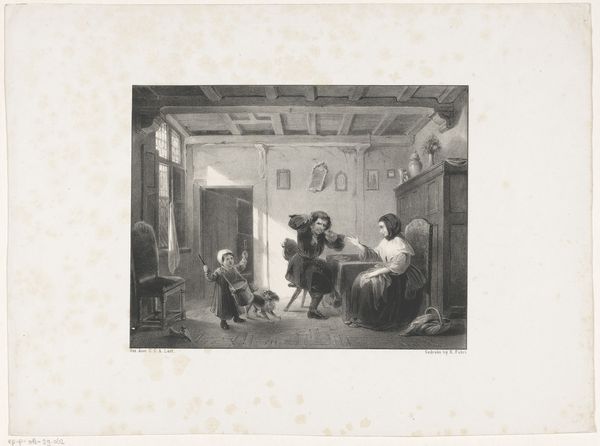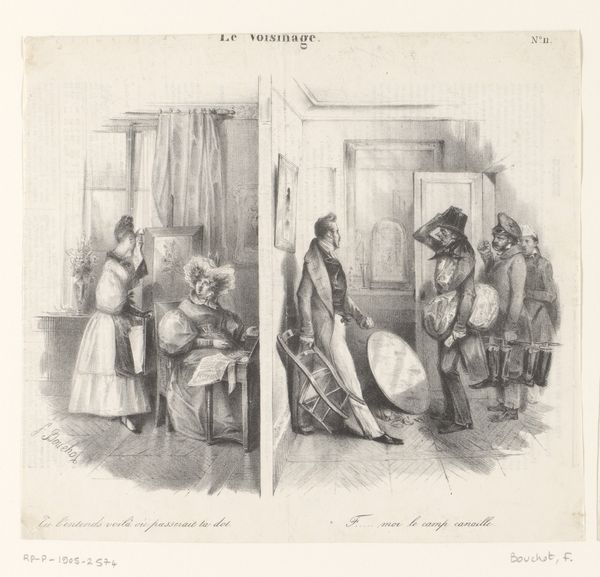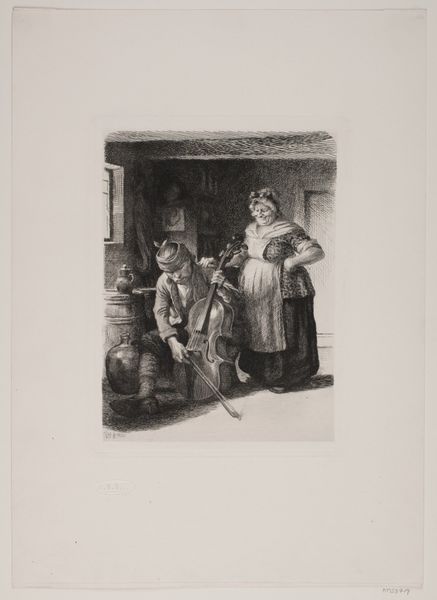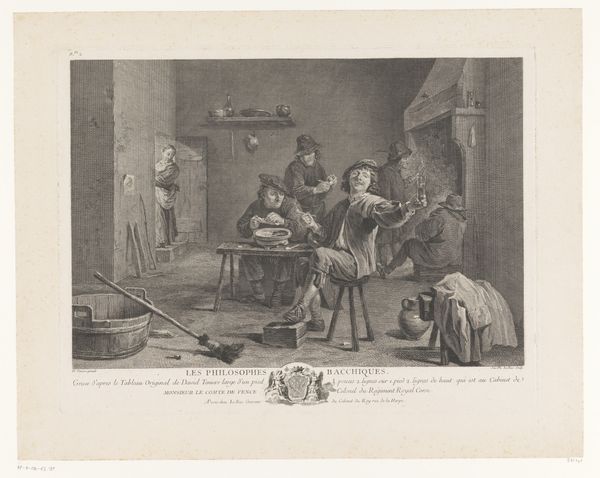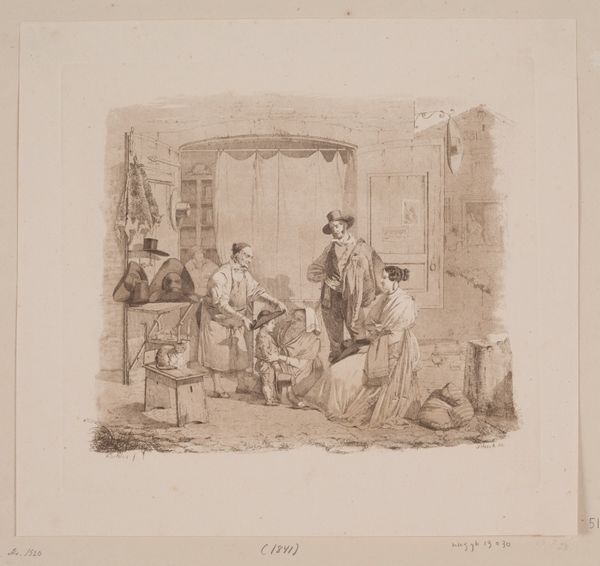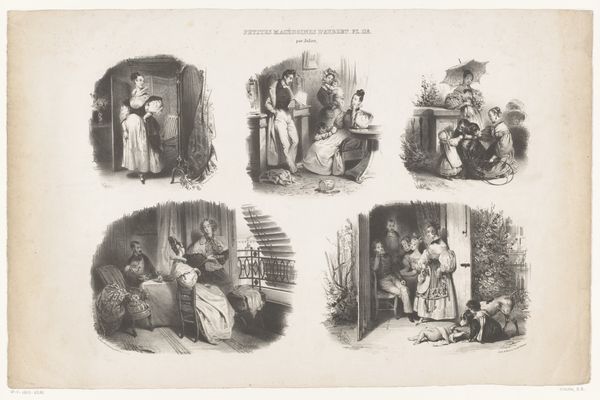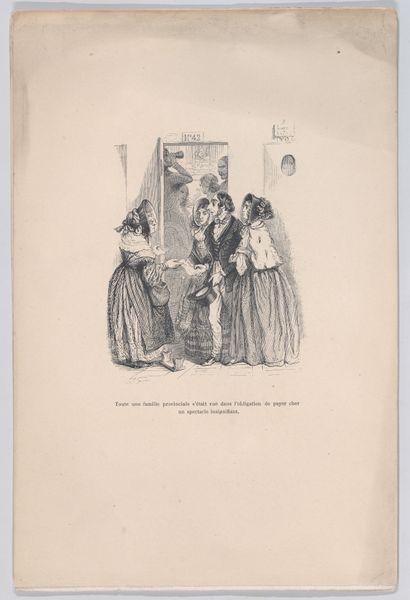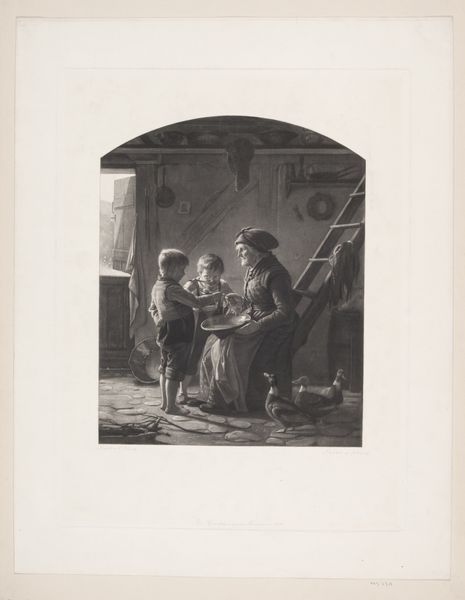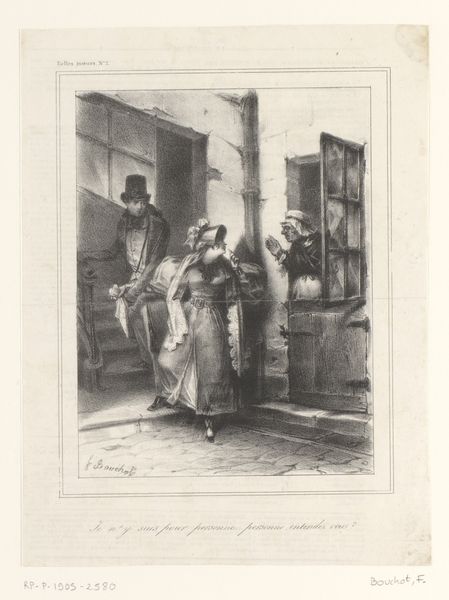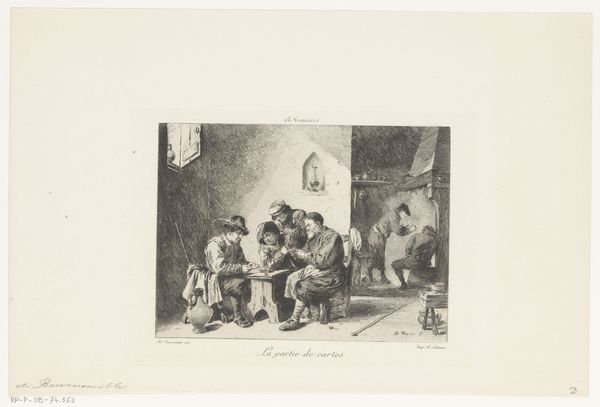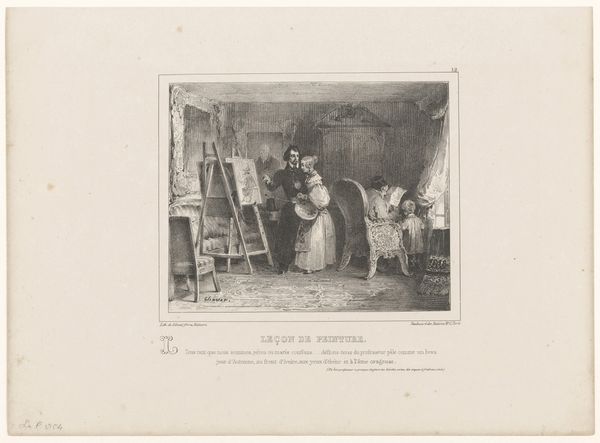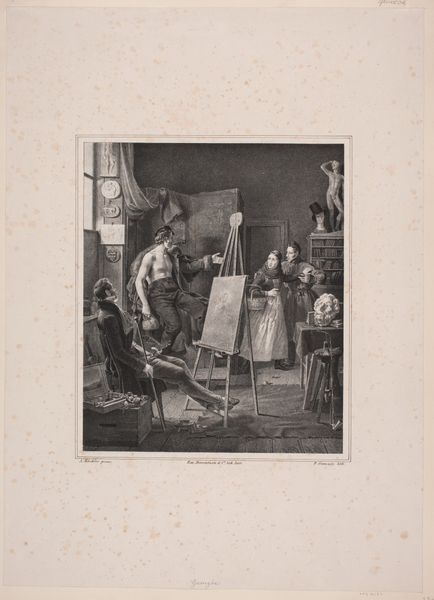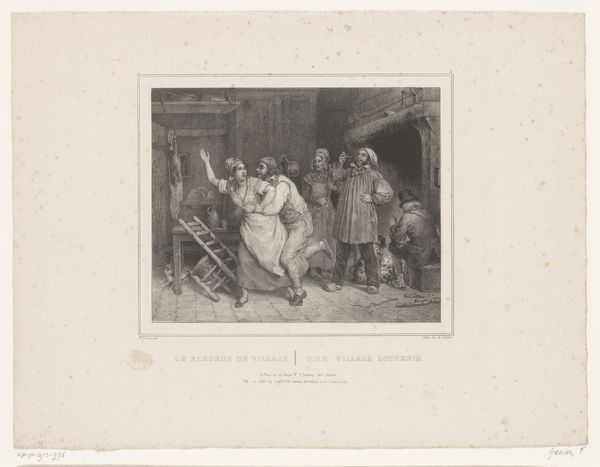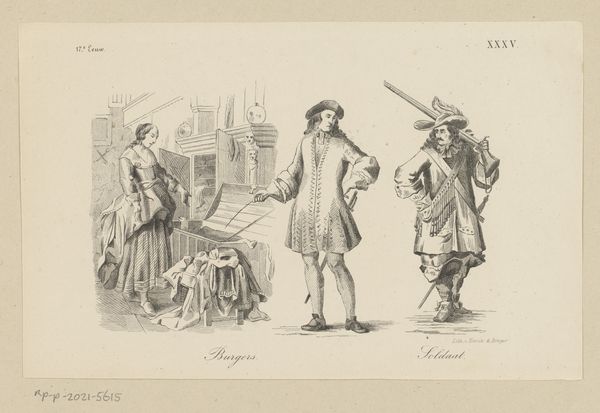
drawing, print, engraving
#
drawing
#
comic strip sketch
#
imaginative character sketch
#
light pencil work
#
quirky sketch
# print
#
pencil sketch
#
old engraving style
#
figuration
#
personal sketchbook
#
idea generation sketch
#
sketchwork
#
romanticism
#
line
#
pencil work
#
genre-painting
#
engraving
Dimensions: height 226 mm, width 245 mm
Copyright: Rijks Museum: Open Domain
Curator: Fréderic Bouchot's "Jonge vrouw bespioneert een schilder in zijn atelier", or "Young woman spying on a painter in his studio," made in 1832, is rendered with engraving on paper. Note the stark contrast produced by the linear quality of the medium. Editor: My first impression is of an intercepted narrative, frozen in time. There’s a delightful sense of both humor and intrigue embedded within this piece, amplified by the furtive actions of the young woman. Curator: Indeed. Notice how Bouchot strategically employs contrasting spatial planes? The composition cleaves the scene, bisecting the spaces of observing and observed, private and public. It almost performs a silent film strip trope of adjacent scenes. Editor: Symbolically, the image speaks volumes about social mores. The young woman peering—it implies a clandestine act, potentially defying social expectations of female decorum in that era. She literally looks like a curious and self-assured individual who does not necessarily believe in social conventions, especially as her clothes don't have many luxurious adornments compared to what was usual at the time, but still very proper. Curator: Semiotically, the palette itself enforces a sense of order—the interplay between stark white paper and deeply contrasting line work implies a certain rigidity, a formalism of social hierarchy which the iconography suggests are about to be playfully destabilized. It feels structurally clever. The space created by lines on a bare paper offers many interpretations. Editor: And the placement of the artist within the confines of his atelier underscores the artist’s perceived creative freedom—a privilege perhaps envied or questioned by the woman. One may suggest that Bouchot's intention was to invite viewers to reflect on gender roles, power dynamics, and the allure of forbidden knowledge within 19th-century society. The whole image evokes those conflicts. Curator: Fascinating; your cultural reading indeed allows one to consider its continued relevance. Considering just the line quality and composition alone, I find it remains a wonderfully engaging example of formal artistic technique. Editor: Yes, by integrating symbolic investigation and visual exploration, it provides us with richer insights into Bouchot's intention and impact. It adds valuable insight beyond merely analyzing lines on paper.
Comments
No comments
Be the first to comment and join the conversation on the ultimate creative platform.
